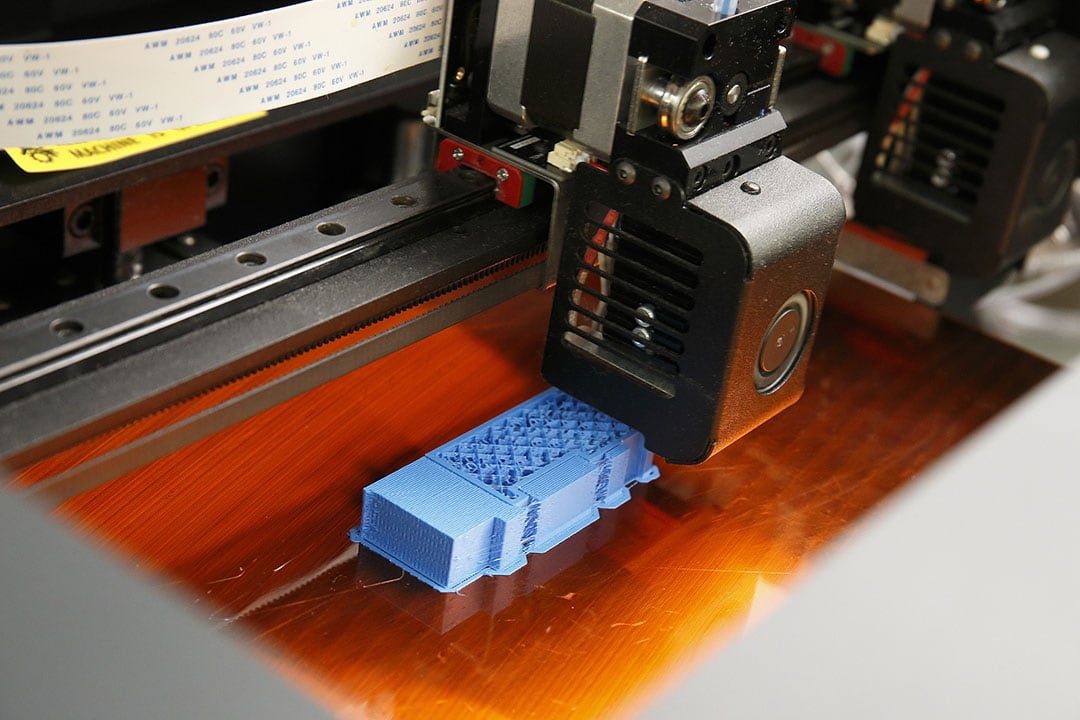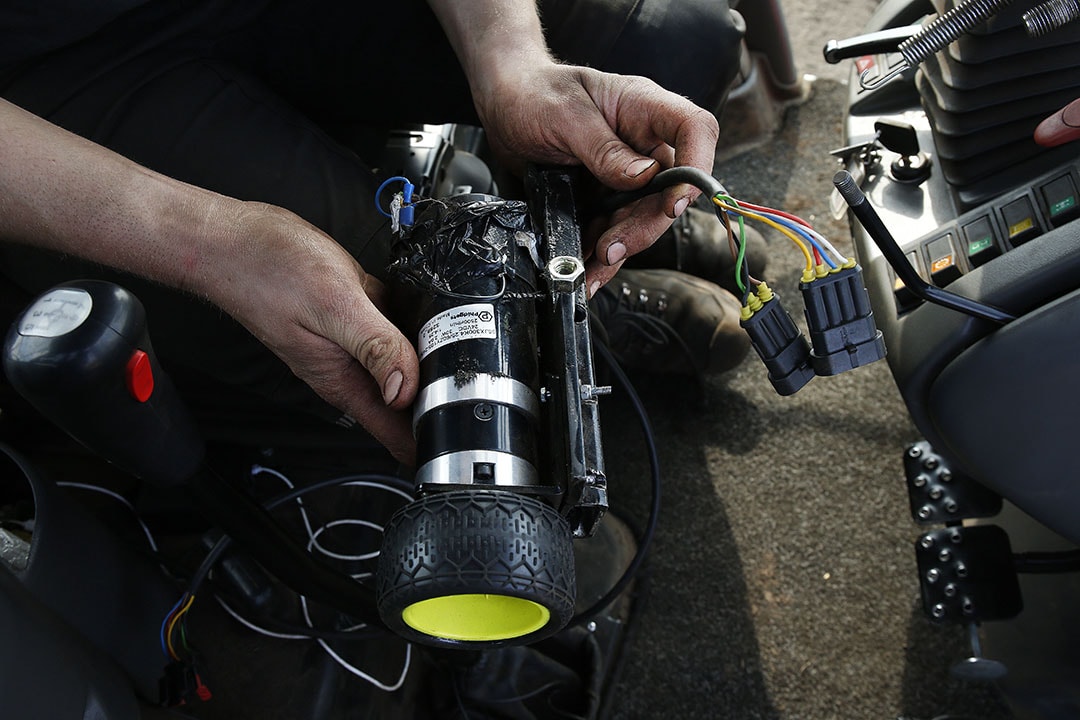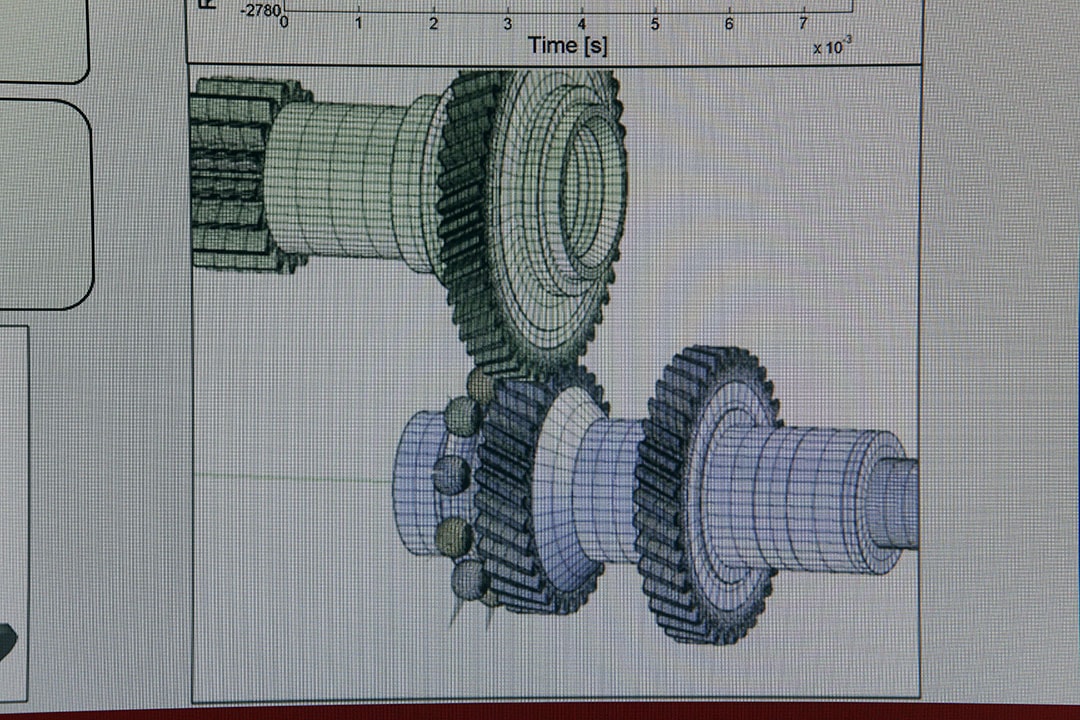3D printing agricultural machinery parts: realistic or not?

Manufacturing and shipping agricultural machinery parts is tricky and time-consuming. 3D printing may be a solution, but how realistic is this?
In recent years, 3D printing has taken off. The relatively new production technique can convert digital files into tangible objects that are built up layer by layer by the 3D printer. Usually this is done with plastic, but some printers can print metal or ceramic.
Little demand from the agricultural sector
3D printing has been around for several years, yet there is still little demand from the agricultural sector, say Jimmy Gies and Luuk Wissink of Dutch company K3D. At their company metal parts in stainless steel, aluminium, and tool steel have been rolling out of the printer for years.
The company now employs 6 full-time employees who are involved in printing and the processes surrounding it, such as product development. More than 90,000 applications have now been printed in metal at K3D, intended for a multitude of sectors.
However, there have been hardly any orders from the agricultural sector. “We did once print a part for an asparagus picker. This involved a complex shape for hinges. Some prototypes have been printed, but that’s about it,” says Wissink.
Text continues underneath image

Printing of large parts a possibility
Agricultural machines are usually made up of larger parts. “For that reason, it is understandable that manufacturers do not come knocking on our door,” says Wissink. The metal printer from K3D metal is suitable for objects of 420 x 420 x 400 millimetres, but in the Netherlands, there are metal printers that can make large parts. Wissink: “In the shipbuilding world, they print parts that are one meter by one meter. So, it is possible.”
Parts for agricultural machinery should not be a problem
Gies and Wissink themselves see few barriers for agricultural machinery parts, but according to the men, 3D printing is an unknown field in the agricultural sector. “We are already producing parts for the automotive industry, the high-tech industry, aerospace, and offshore. And of course, the bread baking industry. Parts for agricultural machinery should not be a problem.”
When time is of the essence, or when parts are particularly expensive or difficult to obtain, Wissink and Gies consider 3D printing of parts a good option. “You limit the delivery time, and you can easily replace objects with wear – or improve parts of older machines that are no longer available.”
Disadvantages with high production numbers
3D printing companies are therefore happy to work for the agricultural sector, but it is not immediately obvious. Researcher Bram Veldhuisen of Wageningen University & Research certainly sees opportunities for 3D printing in agricultural mechanisation, but he also perceives barriers. “And frankly, I even wonder if 3D printing will ever be widely used in the agricultural sector. There are significant drawbacks, especially for high production numbers.”
According to Veldhuisen, making a part with a 3D printer costs is relatively time-consuming and expensive compared to standard production, where parts are made on the assembly line. For example, nozzles, which sometimes go in the thousands. “Once you as a supplier have the right production supplies such as moulds, you only have to pay for the material. With a 3D print, every product costs a relatively large amount of time and energy.”
Text continues underneath image

Opportunities mainly in control devices
“However, when it comes to unique parts that are not sold in large numbers, such as a joystick for operating a tractor, Veldhuisen does see opportunities. “There are joysticks that maybe 300 are made of per year. Developing a special injection mould for such a part is very expensive,” says Veldhuisen. “With a 3D printer you don’t have those costs. It is therefore an attractive solution for such situations. You can also deliver joysticks and control devices completely according to the customer’s wishes, where they normally have to make do with the joystick they get from a supplier.”
CNH Industrial expands 3D printing business
Major suppliers such as CNH Industrial seem to be taking the developments around 3D printing seriously. A few years ago, Agrifac already made the Milan Sprayer with parts that were produced by 3D printers, to create the most compact installation space. CNH Industrial also has 3D printing in mind, says Thibaud Feneuil. The company has expanded the use of 3D printing technology in various areas over the past 3 years.
At CNH Industrial, 3D printing is referred to as additive manufacturing. It is currently being used to support the production of spare parts. “We do this to meet customer needs, especially parts with a long-term life cycle.” In addition, 3D printers are used in mould development and in the production of electrical components.
Text continues underneath image

Avoid overstocking
“One of the advantages is that with 3D printing, the lead time of the production process is shortened, which increases product availability for us,” says Feneuil. According to him, 3D printing also allows CNH Industrial to avoid overstocking. In this way, wastage of tool investments is prevented. “The disadvantages are still the cost per part when compared to standard production. In addition, the general mindset must also change, so that we start designing parts in a different way. The function of the component must come first.”
High growth potential
CNH Industrial therefore seems to see potential in the new production technology, and the company will expand its 3D printing activities even further, Feneuil reveals. “We are expanding our internal printing capacity in the coming years, but we are also expanding our network of specialised service companies so that they can support the printing of our products. We think 3D printing has high growth potential. As technology continues to improve, the quality of our products improves, and high process repeatability becomes possible. In time, it could replace standard production with a low to medium production volume in certain areas.”
Text continues underneath image

Granit Parts: opportunities for vintage cars
Back in the Netherlands, Peter Dekkers of parts supplier Granit Parts thinks that the market is currently unfamiliar with 3D printing. “3D printed parts often look different and that may cause confusion. Customers are not familiar with it yet, but I think that this also applies to manufacturers. Of course, these kinds of developments require major investments. Companies naturally think carefully before investing. In addition, all production processes, such as the moulds from manufacturers, are still geared to the current working method.”
Dekkers also wonders whether suppliers will be so keen on the development. The future should show that, he says. After all, there is often also good money to be made on spare parts. He sees opportunities for parts that are no longer available for, for example, old-timers.
His colleague Helge Morgenstern, the head of Granit Parts’ research department FRICKE Innovation Lab in Hamburg, says that the company has now purchased its own 3D printer for consumers. “With this, we try to make the topic accessible to colleagues throughout the company. We invite them to try things out and make them aware of the impact of 3D printing on our business and our customers. There are also plans to place a more professional 3D printing application at our head office in Heeslingen, to investigate 3D metal printing, among other things.”
Influence on the trade in agricultural parts
Morgenstern thinks it is still a bit early to predict how much influence the technology will have on the trade in parts in the agricultural sector. “But I’m pretty sure that early prototyping and machine construction will see significant change in the coming years, as many things will be possible with 3D printing that just weren’t possible until now.”
He sees potential for the availability of products and the reliability of deliveries. As far as Morgenstern is concerned, learning and discovering what is possible today and in the future is paramount. “We are already investing millions in our digital processes and logistics to make spare parts available the next day for all of Europe. Our customers probably will not have a 3D printer in their workshop in the coming years, but maybe in the future suppliers will send us building plans with necessary parts. These can then be produced with us in Heeslingen on a ‘farm’ of specialised 3D printers.”
Join 17,000+ subscribers
Subscribe to our newsletter to stay updated about all the need-to-know content in the agricultural sector, two times a week.



